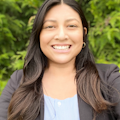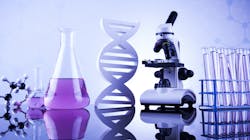Forensic dentistry: A meaningful opportunity (that you may not know about)
As dental hygiene students, we imagined our lives after graduation working in traditional clinical settings. After hearing Winnie Furnari, MS, RDH, speak at the Oregon Dental Hygiene Student Conference about her experiences as a forensic dental hygienist, we were surprised to learn forensics were an option for us.
Upon further research, we learned that the American Board of Forensic Odontology (ABFO) recommends that dental hygienists be part of mass fatality victim identification teams.1 Since we weren't aware of the opportunity, we wondered if other hygienists knew.
We decided to conduct interviews with three forensic dental hygienists to learn more about how they became involved in the field, the training needed, and their experiences working in forensic dentistry. We wanted to gather their insights and raise awareness about the potential opportunities for other dental hygienists.
Our first interviewee was Winnie Furnari. She earned a master’s degree in biosecurity and catastrophe preparedness and was trained in forensic dentistry by the Armed Forces Institute of Technology. Winnie passed away this past April, and had been a member of the New York City Medical Examiner’s Dental Identification team and a forensic educator, teaching forensic dentistry and catastrophe preparedness at New York University. Winnie published peer-reviewed journal articles and presented nationally and internationally at forensic conferences. Her involvement in forensic dentistry started after she joined the NYU College of Dentistry’s Disaster Preparedness Committee.
Our second interviewee was Kimberly Erdman, MSDH, BSDH, RDH. Kimberly is a member of the American Society for Forensic Odontology. She became involved in forensics after meeting an oral pathologist who worked at the Charles E. Carson Center for Mortuary Affairs in Dover, Delaware. They began working together to identify military members and government officials who had passed away overseas.
Our third interviewee was Amber Riley, MS, RDH. Amber is currently president of the American Society of Forensic Odontology (ASFO), the first dental hygienist to hold the position. Amber is a fellow of both the American Academy of Forensic Sciences (AAFS) and the International Association of Coroners and Medical Examiners (IACME). She lectures internationally on forensic odontology and oral pathology. She became involved in forensics after talking with a patient who worked as an FBI agent and connected her with a death investigator for her county. She now works with the chief forensic odontologist in San Diego, California.
You might also be interested in: 9/11: Dental hygienists' incredible contributions to identification efforts
What our interviews revealed
Based on our research and interviews, these dental hygienists perform the same or similar procedures and assessments during the victim identification process. Amber said the intake of postmortem (after death) records is “like doing a new-patient dental exam.”
In the process of collecting postmortem records, hygienists take new radiographs to start the victim identification process. Hygienists must use their education in dental science to help categorize teeth and identify any dental anomalies such as tori, tooth malposition, or occlusion. They must also identify restorations or dental procedures the victim may have had, such as wires, implants, crowns, or plates.
Then antemortem (before death) records, including chart notes, radiographs, odontograms, and photos, are compared with the postmortem records. Hygienists may also be involved in any needed administrative aspects. This may include contacting dental offices to obtain antemortem records and helping with documentation.
We learned that most forensic dental hygienists are not compensated, and most do this as volunteers. While there are some instances of compensation, Kimberly’s participation is voluntary, and Amber works for the county as a community contribution and receives no compensation. However, when Amber goes on a federal deployment through Disaster Mortuary Operational Response Teams (DMORT), she’s compensated as a federal employee.
We asked each interviewee about their most impactful experience working in forensic dentistry. Winnie loved hearing, “The work was done by the dentists and dental hygienists on the team.” This proved that dental hygienists are being recognized and appreciated for their contributions to forensic dentistry. She also found it satisfying that hygienists can be instrumental in helping families through this process and helping law enforcement with their work.
Kimberly’s most impactful experience is finishing a day knowing that families are being notified, death certificates are being signed, and families can process their loss. She was surprised in one instance to see her own handwriting on one of the victim’s dental records that she was using to identify victims. She had to put aside her feelings to perform the postmortem assessments and not think about how she once knew the victim.
Amber found great meaning in learning the importance of accurate recordkeeping and that “there’s never too much information.” She talked about trying to identify victims of a plane crash. She was surprised to see how even a periodontal chart was useful when trying to match teeth to a victim. Amber was able to categorize dental fragments based on evidence of victims where periodontal disease was present or absent.
We can all play an important role
While many dental hygienists may not think they can play a role in the victim identification process, all RDHs have the opportunity to influence this work. The theme throughout our interviews was how important accurate recordkeeping and documentation is in the victim identification process. It’s vital to record and obtain pictures of any anomalies, as well as take good diagnostic radiographs antemortem.
Charting of existing restorations and dental work is also critical. Be aware of signs of abuse, such as bite marks or bruising. Reporting and keeping records of the suspected abuse is another part of forensic dentistry. All these antemortem records are used for comparison with postmortem records to help identify victims. If there are no records (or the records are inaccurate), this may delay or make it impossible to identify victims. “As a dental hygienist, you don’t realize how important accurate documentation and charting is until that’s the only thing you can rely on to identify a victim,” Kimberly said.
If you’re a hygienist who wants to learn more ways to become involved in forensic dentistry, we recommend you join the American Society of Forensic Odontology (OSFO). This organization is open to anyone and offers resources to learn more and opportunities to attend meetings. Hygienists can also join DMORT to be formally trained and deployed as needed.
Even if you do not directly become involved in forensics, you can still make a difference in forensic dentistry through accurate and thorough recordkeeping in your practice. Winnie said, “Never think, ‘I’m only a hygienist, so what can I do?’ You can do plenty.”
Editor's note: This article appeared in the July 2023 print edition of RDH magazine. Dental hygienists in North America are eligible for a complimentary print subscription. Sign up here.
Reference
- Newcomb TL, Bruhn AM, Giles B. Mass fatality incidents and the role of the dental hygienist: are we prepared? J Dent Hyg. 2015;89(3);143–151.
About the Author

Vanessa Sotelo, SDH
Vanessa Sotelo, SDH, is a student in the School of Dental Hygiene Studies at Pacific University in Hillsboro, Oregon. She will be graduating in August, 2023.

Madison Kramer, SDH
Madison Kramer, SDH, is a student of the School of Dental Hygiene Studies at Pacific University in Hillsboro, Oregon. She will be graduating in August, 2023.
